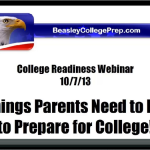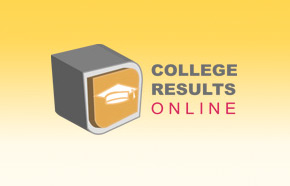Why Visit Colleges?
Seeing Beyond the Brochure
PDF Version of this page
You hear it from colleges. Come visit! You hear it from your high school counselor. Have you visited any campuses yet? And you hear it from us. But what's the big deal about seeing a college?
You Can't Judge a College by Its Brochure
A campus visit is your opportunity to get a firsthand view of a college. A college catalog, view book, or website can only show you so much. To really get a feel for the school, you need to walk around the quad, sit in on a class, and visit the dorms.
Get Answers to Your Questions
A visit also gives you the chance to talk to students, faculty, and financial aid and admission folks. You can get answers to questions, such as:
- What is the average class size, and the student to faculty ratio? Are most classes taught by professors or by teaching assistants?
- What is the campus meal plan like? How is the food?
- What is the make-up of the current freshman class? Is the campus fairly diverse?
- What's the social scene like? What kinds of activities are planned by the college's Residential Affairs?
- Is there ample space in dorms or does there seem to be a housing crunch?
- How many students are commuters/residents?
- Do I feel at home here? Is this what I pictured college to be?
Get Valuable Information
Pick up any official school material you see, such as brochures and financial aid forms. Don't forget to get business cards, too, so you'll have a real, live contact if you have a question about admission or financial aid.
Student-produced material will give you a sense of what campus life is really like. Look around for newspapers and activity calendars. Check out bulletin boards, too, to see what bands are coming to the campus, parties are advertised, internships are posted, and generally what the day-to-day energy of the place is.
Is This College Right for You?
Ultimately, it's your decision. Listen to your gut. Do you feel comfortable walking around campus? Do you click with the students and faculty? Spending time on a campus allows you to determine if a school is a good match.
When to Visit
How to Schedule Your Campus Visits
Schoolwork, your job, your parents... choosing the right time to go on campus visits may seem like a complicated procedure. But when you're planning your trip, just be sure not to lose sight of the reason you're going: to see if the school is a good fit for you. This means you need to see the college when classes are meeting and day-to-day activities are taking place. In other words, go when the college is in session.
How to Pick a Date
There's more than one right time to make campus visits. The trick to picking the right dates for you is to plan well ahead of time.
During the Week
Monday through Thursday is ideal since campuses are generally in full swing. Since junior and senior years can be busy for you, though, it's important not to let visits interfere with your schoolwork. If possible, try to visit during high school holidays that fall on Mondays, when most colleges are in session. However, if there is a good reason in which to have to miss a day of school, most schools will understand that visiting various colleges is vital to your preparation.
The Best Seasons
Late summer and early September before senior year are convenient times to visit since many colleges begin their fall semester as early as mid-August. But generally, fall through winter and sometimes early spring are the seasons when seniors should conduct their explorations. The big thing… preparation; contact the college to find out when their normal classes will be in session.
Spring of Junior Year
Juniors who have researched colleges should consider using spring vacations for college visits. Spring is also a good time of year if you play fall sports or are considering early action or early decision with application deadlines in November of senior year.
After You've Been Accepted
Many colleges invite their accepted candidates to spend a few days on campus before the May 1st reply date to encourage them to enroll. This is a good opportunity to make some in-depth comparisons between the colleges that have accepted you.
On the other hand, if you're planning to visit colleges only after you've received acceptances, you may find yourself in a difficult position. Consider that most colleges don't mail acceptance letters before April and that the standard reply date is May 1. This means you may have only a few weeks before the reply date to visit.
You could also be in a tight bind if, after visiting in person you find you're not satisfied with your options. Visit before applications are due so that you're confident you'd be happy at any of the colleges on your list.
When Not to Go
Here are times you'll probably want to avoid:
- When colleges aren't in session:
- Thanksgiving weekend
- Christmas week
- Winter and spring breaks (these are usually different dates than high school breaks.)
- Summer
- When classes aren't meeting:
- Reading period
- Exam weeks
- Saturdays and Sundays
- When the admission office is closed to visitors
Some colleges have very specific dates when prospective students can visit.
Check specific dates with each college so you don't arrive when the campus is deserted.
Preparing for a College Campus Visit
Know before You Go
It may be tempting to just yell "Road-Trip!" and head out to campuses, but you'll get more out of your visits if you plan ahead.
Research the College
It's important to know something about the college before you arrive on its campus, especially if you have an interview scheduled.
- Review the view books, course catalogs, and any other materials the college sends to prospective students.
- Spend some time surfing their website.
- Talk to currently enrolled students or alumni about their college. Some college websites let you contact them online, or you can get their contact information from the admission office.
Scheduling Your Trip
Pick a time that's convenient to you, but try to go when classes are in session. That way, you can sit in on a lecture or stay in a dorm overnight. You'll only get a true feel for the campus if you're there on a day when classes are in full swing.
Schedule your time on campus, too, to make sure you'll have time for everything you want to do:
- Find out how often college tours run, and if you have to sign up in advance.
- Be sure to get a map of the school. You don't want to spend half your day trying to park or find the admission office.
- If an interview is suggested, make an appointment. Also, consider meeting with the financial aid officer.
- If you're curious about a club, program, or a sport, arrange to attend a practice, rehearsal, or meeting.
Pack a Camera and Notebook
Was it X College or Y University that had that excellent exercise equipment in the gym? Where did I talk to that cool psychology professor? You think you'll remember everything, but you'll be surprised how colleges start to merge after you've seen a few.
What's Important to You?
Make a list of what college characteristics are most important to you, so you know what to evaluate. Do you feel overwhelmed in a large lecture hall? Check out the class size. Do you have your heart set on joining a sorority or fraternity? See what the Greek system is like on campus. Is there a particular major that you want to pursue? Talk to current students or professors in that department.
Develop a list of your preferences. Take this list to the schools that you plan to visit, and compare them when you get back home.
Campus Visit Checklist
Make the Most of Your Trip
Here are things you shouldn't miss while visiting a college. Take a look at this list before planning campus trips to make sure that you allow enough time on each campus to get a sense of what the school -- and the life of its students -- is really like.
a) Take a scheduled campus tour.
b) Have an interview with admissions officer.
c) Get business cards and names of people you meet for future contacts.
d) Pick up financial aid forms.
e) Participate in a group information session at the admissions office.
f) Sit in on a class of a subject that interests you.
g) Talk to a professor in your chosen major or in a subject that interests you.
h) Talk to coaches of sports in which you might participate.
i) Talk to a student or counselor in the career center.
j) Spend the night in a dorm.
k) Read the student newspaper. The college may have a student run paper as well as a college paper, check out the student paper. This one will give you the vibe of the campus. /students/college-newspaper-directory
l) Try to find other student publications -- department newsletters, alternative newspapers, literary reviews.
m) Scan bulletin boards to see what day-to-day student life is like.
n) Eat in the cafeteria
o) Ask a student why he/she chose this college.
p) Wander around the campus by yourself.
q) Read for a little while in the library and see what it's like.
r) Search for your favorite book in the library.
s) Ask a student what he/she hates about the college.
t) Ask a student what he/she loves about the college.
u) Browse in the college bookstore.
v) Walk or drive around the community surrounding the campus.
w) Ask a student what he/she does on weekends.
x) Listen to the college's radio station.
y) Try to see a dorm that you didn't see on the tour.
z) Imagine yourself attending this college for four years.
Ten Tips for Surfing College Websites
Long gone are the days when colleges depended only on the brochures and view books they could fit inside your mailbox. They now devote large chunks of their websites to grabbing your attention. But there's much more to a college website than the Web pages of the admissions office. By surfing as though you're already a student, you can start to picture life on campus. Here are ten tips that take you far beyond the home page.
- Browse the school newspaper online. More and more colleges are putting their student-run newspapers online. Although it may take some digging to find them, they're well worth looking for. In everything from hard news to editorial cartoons, you'll get a feel for campus life, student concerns, and the caliber of student thinking and writing.
- Lurk in the halls of student government. These legislative bodies can be key players on campus, controlling multi-million-dollar budgets that support a wide range of student services. On their websites, you can get an idea of just how seriously they take their responsibilities. You may even be able to read the minutes of a recent meeting.
- Go clubbing. Are you an activist? A bird watcher? A demon at the chess board? A future marketing exec? A South Asian woman? Often funded by student government, clubs come in all shapes and sizes. Look for links like Student Life to find out if there are campus clubs you'd want to join.
- Patronize the arts. The campus is often home to cultural events that draw locals as well as students. Click on Events, Museums, Arts, or a similar link to learn about the school's film screenings, plays, lectures, art shows, poetry readings, concerts, and other cultural events.
- Enlist academic support. You'll find that colleges take great pains to keep you on campus once you get there. They offer a wide range of support services, which can include everything from drop-in writing assistance and peer tutoring in statistics to time management mini-courses. You might find a description of these services in a section called Student Services or simply Students, but it's just as likely that you'll have to refer to the site map.
- Check out the library. If the school offers online library resources, you'll probably find a Libraries link on the home page. Click to learn how large the book collection is, to try out their online catalogue, and to find out which electronic databases the library subscribes to. You can also learn how the library teaches new students about their services.
- Check into housing. You might be surprised at the many varieties of on-campus housing. Although your choices as a freshman might be more limited, you'll find language, Greek, and honors houses; dorm rooms that are more like apartments (with kitchens and bathrooms); and even lower-cost co-ops where students work together to prepare meals and perform other housework.
To find out what will be available to you during your first year, your best bet is to look for a Housing link under Admissions or Prospective Students. But to learn about the more distant future, try looking under Student Services or Current Students.
- Check up on student health services. You'll be charged a student health fee when you register for classes, so why not find out what you're paying for? Look for a link on the home page that will take you to the student health services website. You'll learn which medical and counseling services are included and which are not.
- Log on to computing services. Are dorm rooms wired? Can you buy a discounted computer through the college? What technology support services does the college offer? Will you be able to register for classes online or will you have to stand in line? Do professors use the Internet to enhance class? For answers, look for an "Information Technology" link on the home page.
- Grab a tray. While some campuses offer only school-run cafeterias, others rent space to private businesses selling everything from pizza to garden burgers. Look for a link to dining services and get a taste of what's available. You might even find this week's menu online.
- (But who's counting?) Root for the home team. Care for a set of tennis? A yoga class? Or maybe you're more at home cheering in the stands. Click on Athletics to look into intramural and recreational sports (in which any student can take part), fitness equipment and classes, and varsity season calendars.
Sneak Preview
Surfing College Websites for Academic Info
College websites provide a wealth of academic information -- if you know how to use them. When you land on a college home page, there may be a link designed especially for you, the prospective student. While this link can lead to useful information, it's not the best route to take if you want details about a specific major.
Instead, look for a link called Academics, Degree Programs, Courses of Study, or something similar. Hint: if you don't see any of these links on the home page, try clicking on Current Students. From there, you should be able to travel in at least two directions. You can browse the catalogue or visit department websites.
Academic Catalogues
If you follow a link to the school's academic catalogue, you will probably be taken to a PDF file requiring Adobe Acrobat. Academic catalogues lay down the law when it comes to earning a degree. They spell out the course requirements for each major and include short course descriptions of required courses as well as frequently offered electives. Although websites are relatively new, catalogues have been around in book form for ages.
Department Websites
In addition to reading the college catalogue, you can visit the Web pages of departments offering academic degree programs of interest to you. Department websites often include degree requirements as well, but they also offer much more.
Here's the place to read about faculty, their teaching and research interests, and their academic and professional backgrounds. Some departments even give profs their own home pages where they can post everything from course syllabi to pictures of their dogs. If you like what you see, consider sending an email with questions, especially if the professor is also a department head or advisor. Remember, though, that she may not have time to respond quickly
Like academic catalogues, department websites usually list the courses they offer. Their descriptions are often much more detailed, however. Some even post up-to-date syllabi and student projects. A course syllabus outlines course objectives as well as the professor's expectations of her students. You'll also find a schedule of tests, reading assignments, and paper due dates. There's no better way to sneak a peek at your college workload.
The Social Scene
Another browsing bonus: If the department's website is well-done, you'll be able to form a clear picture of the department's culture. Look for a schedule of special events, such as poetry readings, scientific lectures, political debates, and language discussion groups. If the department sponsors a club or honor's society for majors, this group may have its own Web page.
*************
Tips for a Successful College Visit
By Allen Grove, About.com Guide
College visits are important. Before you commit years of your life and thousands of dollars to a school, be sure you're choosing a place that is a good match for your personality and interests. You can't get the "feel" of a school from any guidebook, so be sure to visit the campus. Below are a few tips for getting the most out of your college visit . . .
1. Explore on Your Own
Of course you should take the official campus tour, but be sure to allow time to poke around on your own. The trained tour guides will show you a school's selling points. But the oldest and prettiest buildings don't give you the entire picture of a college, nor does the one dorm room that was manicured for visitors. Try to walk the extra mile and get the complete picture of the campus.
2. Read the Bulletin Boards
When you visit the student center, academic buildings and residence halls, take a few minutes to read the bulletin boards. They provide a quick and easy way to see what's happening on campus. The ads for lectures, clubs, recitals and plays can give you a good sense of the types of activities going on outside of the classrooms.
3. Eat in the Dining Hall
You can get a good feel for student life by eating in the dining hall. Try to sit with students if you can, but even if you're with your parents, you can observe the bustling activity around you. Do the students seem happy? stressed? sullen? Also, is the food good? Are there adequate healthy options? Many admissions offices will give prospective students coupons for free meals in the dining halls.
4. Visit a Class in Your Major
If you know what you want to study, a class visit makes a lot of sense. You'll get to observe other students in your field and see how engaged they are in classroom discussion. Try to stay after class for a few minutes and chat with the students to get their impressions of their professors and major. Be sure to call in advance to schedule a classroom visit -- most colleges don't allow visitors to drop in on class unannounced.
5. Schedule a Conference With a Professor
If you've decided on a possible major, arrange a conference with a professor in that field. This will give you an opportunity to see if the faculty's interests match your own. You can also ask about your major's graduation requirements, undergraduate research opportunities, and class sizes.
6. Talk to Lots of Students
Your campus tour guide has been trained to market the school. Try to hunt down students who aren't getting paid to woo you. These impromptu conversations can often provide you with information about college life that isn't part of the admissions script. Few university officials will tell you if their students spend all weekend drinking or studying, but a group of random students might.
7. Sleep Over
If it's at all possible, spend a night at the college. Most schools encourage overnight visits, and nothing will give you a better sense of student life than a night in a residence hall. Your student host can provide a wealth of information, and you're likely to chat with many other students on the hallway. You'll also get a good sense of the school's personality. What exactly are most of the students doing at 1:30 a.m.?
8. Take Pictures and Notes
If you're comparing several schools, be sure to document your visits. The details may seem distinct at the time of the visit, but by the third or fourth tour, schools will start to blur together in your mind. Don't write down just facts and figures. Try to record your feelings during the visit -- you want to end up at a school that feels like home.
Filed under:
Member by J.D Wyczalek







